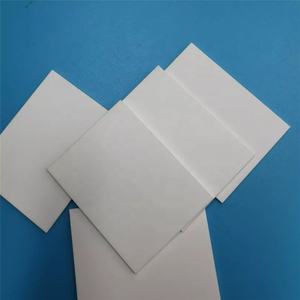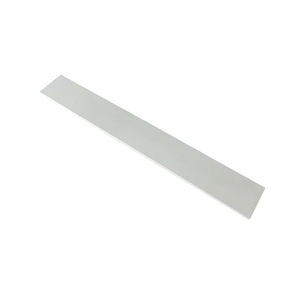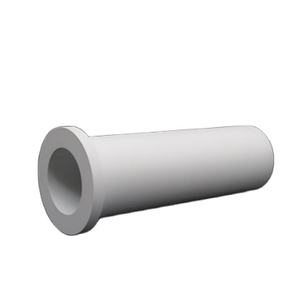Professional industry ceramic supplier, silicon nitride, silicon carbide, aluminum nitride and any other kinds of ceramics.
PRODUCT PARAMETERS
Description
Overview of Unlocking The Potential of Hbn Boron Nitride Ceramics for High-Performance Applications
Unlocking The Potential of Hbn Boron Nitride Ceramics for High-Performance Applications ceramics are a class of advanced technical ceramics, often referred to as “white graphite.” They are renowned for their unique combination of properties, including high thermal conductivity, excellent electrical insulation, and outstanding thermal shock resistance. Available in various forms such as hot-pressed solids, coatings, and composites, BN ceramics are critical in demanding applications across aerospace, electronics, and metallurgical industries.
Features of Unlocking The Potential of Hbn Boron Nitride Ceramics for High-Performance Applications
-
High Thermal Conductivity: Offers excellent heat dissipation, similar to metals, while maintaining electrical insulation.
-
Excellent Thermal Shock Resistance: Withstands extreme and rapid temperature changes without cracking.
-
Superior Electrical Insulation: Maintains high resistivity even at elevated temperatures.
-
Low Dielectric Constant and Loss: Ideal for high-frequency and microwave applications.
-
Good Chemical Inertness: Resists attack from most molten metals, slags, and salts.
-
Non-wetting and Non-reactive: With many molten metals like aluminum and copper.
-
High Temperature Stability: Can be used in inert or vacuum atmospheres up to 3000°C.
-
Machinability: Can be precision-machined into complex shapes using conventional tools, unlike many other advanced ceramics.
Specifications of Unlocking The Potential of Hbn Boron Nitride Ceramics for High-Performance Applications
HBN boron nitride ceramics use distinct residential properties for requiring usages. They excel in heat settings. These porcelains stand up to intense warmth without losing form. Warmth flows with them quickly. This assists manage temperature in important applications. Components remain cooler and last longer.
Electric insulation is one more key feature. HBN does not conduct power. This makes it risk-free for digital components. It protects against brief circuits near warm resources. Designers count on this insulation in power systems.
Chemical resistance is solid. HBN porcelains handle harsh chemicals well. Acids and bases don’t harm them quickly. This is crucial in chemical handling equipment. Components resist deterioration successfully.
Mechanical toughness supports these features. HBN ceramics are tough and wear-resistant. They preserve honesty under anxiety. This decreases part failing in difficult conditions. Lubricity is additionally present. Surface areas glide smoothly with little rubbing. Relocating parts operate successfully.
Certain information specify efficiency. Running temperatures often go beyond 1000 ° C. Thermal conductivity can be high, comparable to some metals. Dielectric stamina avoids electric failure dependably. Chemical inertness covers several molten salts and steels. Firmness worths go over, standing up to abrasion. These specifications make HBN porcelains a top choice for advanced engineering obstacles. They satisfy the demands of aerospace, semiconductor, and commercial applications.
Applications of Unlocking The Potential of Hbn Boron Nitride Ceramics for High-Performance Applications
HBN boron nitride ceramics offer big advantages for tough jobs. This material deals with severe warm quite possibly. It remains steady even at incredibly heats. That makes it ideal for parts in hot locations. Aerospace utilizes it in rocket nozzles and heat shields. These components face extreme warm during trip. HBN maintains them solid. It likewise stands up to damage very well. This durability helps in reducing devices and use parts. Factories require tools that last. HBN expands tool life significantly.
Another bottom line is electric insulation. HBN does not perform electricity. This is important in electronics. It safeguards delicate parts from shorts. Semiconductor production makes use of HBN crucibles and parts. These hold warm products safely. The product does not react with liquified steels either. This inert nature is beneficial. Steel spreading and handling depend on it.
Thermal monitoring is a significant stamina. HBN relocates warm away swiftly. It cools off locations in tools. Power electronic devices generate great deals of warm. HBN substratums and heat spreaders maintain them cool. This prevents getting too hot and failure. LEDs and laser systems also use HBN for air conditioning. Much better cooling means longer life for these gadgets. The material is also very easy to machine into shapes. This versatility aids designers. They can develop custom-made components for specific needs. HBN addresses issues sought after areas. Its one-of-a-kind residential or commercial properties load important spaces.
Company Profile
Tanki New Materials Co.Ltd. focus on the research and development, production and sales of ceramic products, serving the electronics, ceramics, chemical and other industries. Since its establishment in 2015, the company has been committed to providing customers with the best products and services, and has become a leader in the industry through continuous technological innovation and strict quality management.
Our products includes but not limited to Aerogel, Aluminum Nitride, Aluminum Oxide, Boron Carbide, Boron Nitride, Ceramic Crucible, Ceramic Fiber, Quartz Product, Refractory Material, Silicon Carbide, Silicon Nitride, ect. please feel free to contact us.

Payment Methods
T/T, Western Union, Paypal, Credit Card etc.
Shipment Methods
By air, by sea, by express, as customers request.
5 FAQs of Unlocking The Potential of Hbn Boron Nitride Ceramics for High-Performance Applications
What is HBN Boron Nitride?
HBN is a special ceramic material. It’s made from boron and nitrogen atoms. It looks like graphite. It has a layered structure. This gives it unique properties. It’s often white or off-white.
Why use HBN Ceramics?
HBN offers excellent properties. It handles very high temperatures well. It doesn’t melt easily. It’s a good electrical insulator. Heat flows through it easily. It’s also chemically stable. It resists attack from many chemicals. It provides lubrication like graphite. It works even in a vacuum. It doesn’t stick to many molten metals.
Where is HBN typically used?
HBN finds use in demanding situations. It’s common in high-temperature furnaces. Parts include crucibles, setters, and liners. It’s used in semiconductor manufacturing equipment. Components are boats and heat spreaders. It serves in metal forming. It works as a lubricant or release agent. It appears in electronics for heat management. It’s suitable for aerospace applications too.
How does HBN differ from other ceramics?
HBN stands apart from alumina or zirconia. It has much better thermal shock resistance. It doesn’t crack easily with rapid temperature changes. Its thermal conductivity is higher along certain planes. Its lubricity is a key advantage. Most other ceramics are not self-lubricating. It remains stable in reducing atmospheres. Many oxides degrade there.
Are there handling considerations?
Yes, handling HBN requires care. It’s generally a brittle material. Avoid strong impacts. It can chip or break. It performs best in specific temperature ranges. Check the manufacturer’s data. Its oxidation resistance has limits. Protect it above certain temperatures in air. It might need shielding gases.
REQUEST A QUOTE
RELATED PRODUCTS

The Future of Materials: Hbn Boron Nitride Ceramics for Cutting-Edge Industries

Ceramic Strips Rods Hexagonal Boron Nitride Ceramic Product Processing

China Factory Precision Hot Pressed Boron Nitride Ceramic Parts

Used to Sinter Phosphor Bn Assembled Parts Boron Nitride Ceramic

Gas Atomization Bn Boron Nitride Ceramic Nozzle for Sandblast



